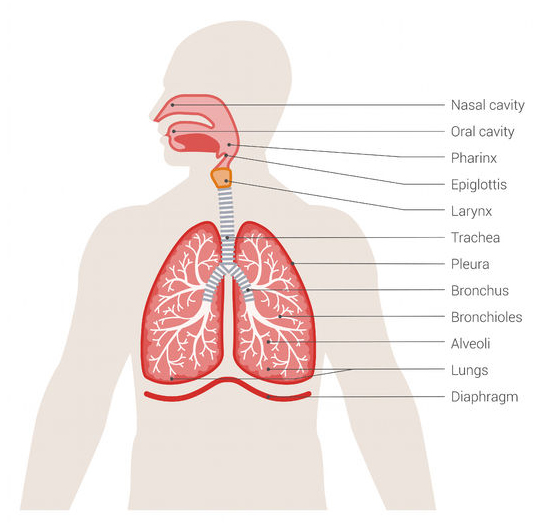The Respiratory System
Handy hint!
This system enables you to breathe and processes the oxygen that you take into your body while breathing.
Respiratory System diagramThe Respiratory System

The main function of the respiratory system is to support the body’s breathing process. This breathing process supplies the oxygen the body needs so that energy can be produced. Take a look at this diagram to see the main parts of the respiratory system.
There are three key steps in the respiratory process – click on the buttons below to find out more.
Breathing in
When we breathe in, our diaphragm muscles contract and raise our ribs up. This allows oxygen to enter our body through our mouth/nose. The respiratory system then delivers this oxygen to the lungs so that it can be used for energy.
The air we are actually breathing in is high in oxygen and nitrogen but low in carbon dioxide.
Gas exchange
Once oxygen has been breathed in and delivered to the lungs, a process called gas exchange takes place in the alveoli. During this process, the oxygen is passed from the alveoli into the blood so that it can be circulated around the body. Carbon dioxide is then removed from the blood and returns to the alveoli so that it can be breathed out of our lungs.
Breathing out
When we breathe out, our diaphragm muscles relax – this causes the ribcage to lower and our lungs are emptied. Because the process of gas exchange has taken place, the air we breathe out is high in nitrogen and carbon dioxide (waste products that our body does not need).
